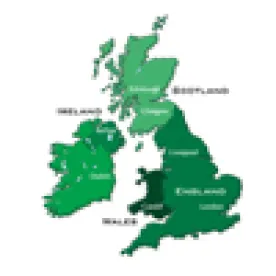A “Race to The Top” to Tackle an Atrocious Global Problem
Introduction
Companies or partnerships carrying on business in the UK with an annual turnover of £36 million (around US$55.5 million) or more will now, for the first time, be required to publish an annual statement setting out the steps they have taken to ensure that there is no modern slavery or human trafficking in their own business and their supply chains.
This is not sector specific such that only banks or energy companies (for example) are impacted. This is relevant for all companies who fall within these new reporting obligations.
The passage of the UK’s Modern Slavery Act 2015[i] (the “Act”) earlier this year consolidated existing criminal offences for modern slavery and human trafficking, increased the maximum sentence available from 14 years to life imprisonment and established a new independent anti-slavery commissioner.
Section 54 of the Act came into force on 29 October 2015 and introduced a new reporting obligation requiring certain businesses to publish a slavery and human trafficking statement for each financial year. As identifying modern slavery can be a challenge, this new reporting obligation is intended to increase supply chain accountability and “seeks to create a race to the top by encouraging businesses to be transparent about what they are doing, thus increasing competition to drive up standards”[ii].
The UK Government’s view is that modern slavery is “extremely prevalent” across the globe. The ILO estimates that there are 21 million people in forced labour in the world today.
The aim of the legislation is to ensure that organisations with significant resources and purchasing power, which are in a strong position to influence global supply chains, implement policies and practices to combat modern slavery in their business and supply chains.
Who is required to issue the statement?
Commercial organisations, including corporate bodies and partnerships, whether incorporated in the UK or other jurisdictions, must issue a slavery and human trafficking statement each financial year if they:
have turnover above £36 million;
carry on any part of their business in the UK; and
supply goods or services.
Earlier this year, the UK Government launched a public consultation to determine the appropriate turnover threshold as this amount was not stipulated in the Act. A range of thresholds from £36 million to £1 billion was proposed. An overwhelming majority of the respondents (80%) to the public consultation favoured the lowest threshold of £36 million on the basis that it would be preferable for the reporting requirement to apply to a broader spectrum of companies.[iii]
The Modern Slavery Act (Transparency in Supply Chains) Regulations 2015 (the “Regulations”)[iv] set the turnover threshold at £36 million. The Regulations establish that total turnover is calculated as turnover derived from the provision of goods and services falling within the ordinary activities of an organisation and its subsidiary undertakings (including those operating outside of the UK), following the deduction of trade discounts, VAT and any other taxes.
Any organisation in any part of a group structure which satisfies these requirements is legally required to produce a statement. If a parent company and a subsidiary company are both obliged to issue a statement, the parent company may publish one statement for both organisations provided that statement outlines the steps taken by each of the organisations for the relevant financial year.
Two options for compliance
Organisations can comply with the section 54 of the Act reporting obligation by either issuing a statement outlining the steps taken during a financial year to ensure that modern slavery and trafficking is not taking place in its business and any part of its supply chain or by releasing a statement that no such steps have been taken. That second approach could attract adverse publicity from consumers, employees, investors and the general public.
Non-compliance with section 54 of the Act will not result in a criminal offence nor a financial penalty. However, negative attention from the UK’s independent anti-slavery commissioner, investors and the general public is likely to prove an effective compliance driver. The Secretary of State may also enforce the obligation to publish a slavery and human trafficking statement by seeking an injunction from the High Court requiring an organisation to comply with the Act. Failure to comply with an injunction is punishable by an unlimited fine.
What does the statement need to say?
The Act requires that the statement sets out the steps the organisation has taken during the financial year to ensure that slavery and human trafficking is not taking place in any of its supply chains and in any part of its own business.
On 29 October 2015, when this reporting requirement came into force, the UK Government issued a guidance document entitled Transparency in Supply Chains etc. A practical guide (the “Guidance”) which is available at:
https://www.gov.uk/government/uploads/system/uploads/attachment_data/file/471996/Transparency_in_Supply_Chains_etc__A_practical_guide__final_.pdf
The Guidance clarifies that “all” of the steps taken are required to be set out in the statement.
Although there is no prescribed form for the slavery and human trafficking statement, section 54 provides that information on the following areas may be included:
the organisation’s structure, business and supply chains;
the organisation’s policies in relation to slavery and human trafficking;
the due diligence processes undertaken to identify slavery and human trafficking in its business and supply chains;
the parts of the business and supply chain identified as at risk of slavery and human trafficking and the steps taken to measure and manage that risk;
the organisation’s effectiveness in ensuring that slavery and human trafficking is not taking place, measured against such performance indicators as it considers appropriate; and
the training made available to staff about slavery and human trafficking.
While businesses are not required to take steps in these areas, the Government has commented that it expects that many organisations may choose to cover these points in order to facilitate the comparison of statements.[v]
The Guidance elaborates on the form and content of the statement. It provides that information on the following areas may be included in the statement:
Organisational structure and supply chains: information on the organisation’s structure, sectors in which it operates, complexity of its supply chains and countries in which it sources goods and services;
Organisational policies: information on the organisation’s code of conduct, recruitment policy and procurement policy;
Due diligence: information on the organisation’s risk management processes, impact assessments, action plans to combat modern slavery;
Assessing and managing risk: identifying and prioritising business risks such as country risk, sector risk, counterparty risk and transaction risk;
Performance indicators: identifying key performance indicators which over time will demonstrate that progress is being made to prevent modern slavery; and
Training: information on the training provided to employees to identify modern slavery.
While there is no legal requirement to undertake due diligence to assess modern slavery risk in an organisation’s operations or supply chains, the completion of due diligence enables effective risk mitigation and reporting.
The Guidance indicates that due diligence should be proportionate to the identified risk and the severity of the risk.
A slavery and human trafficking statement can supplement other human rights reporting that many companies already undertake, including under the UN Guiding Principles on Business and Human Rights.
Approving the statement
The statement must be approved by the board of directors and signed by a director (for partnerships, it must be approved by its members). This ensures that statements have proper approval from senior management, who are well positioned to implement changes to the business and its supply chains.
Publishing the statement
A link to the slavery and human trafficking statement must feature in a prominent position on the homepage of the organisation’s website.
The Guidance indicates that this may be a ‘Modern Slavery Act Transparency Statement’ link which is visible on the homepage or part of an obvious drop down menu.
Where a commercial organisation does not have a website, a copy of the statement must be provided within 30 days of a written request being made.
Timing
The Act’s transitional provisions stipulate that the first organisations required to comply with section 54 will be those whose financial year ends on or after 31 March 2016. So, organisations with a financial year end between 29 October 2015 and 30 March 2016 will not be required to file a statement for that financial year.
This affords organisations time to consider the legislation and the statutory guidance before publishing their first human trafficking and slavery statement.
There is no prescribed time by which the statement must be made. However, the Guidance states that the statement should be published “as soon as reasonably practicable after the end of each financial year” to ensure that it is relevant and timely.
Organisations are encouraged by the Government to report within six months of the organisation’s financial year end.
Commentary
Section 54 is loosely modelled on the transparency provisions in the California Transparency in Supply Chains Act 2012, which apply to retailers and manufacturers doing business in California with an annual turnover of $100 million (approximately £65 million). The transparency provisions in the Act are broader than the Californian legislation and the turnover threshold of £36 million is considerably lower.
The Prime Minister, David Cameron, recently commented that: “from October, we will also require all businesses with a £36 million turnover or above to disclose what they are doing to ensure their business and supply chains are slavery free. The measure is one of the first of its kind in the world and it will be a huge step forward, introducing greater accountability on business for the condition of their supply chains”.[vi]
Organisations falling within the scope of section 54 will need to consider the steps to be taken and the processes to be implemented in their business and supply chains to ensure compliance with the Act.
Businesses with complex supply chains, particularly in jurisdictions where modern slavery and human trafficking may pose a greater risk may find this more arduous than others and they will need to evaluate how best to ensure adequate measures are being taken to identify and combat these risks. This may be a less onerous task for businesses which currently undertake non-financial reporting on human rights and have risk management processes and compliance programmes in place.
[i] http://www.legislation.gov.uk/ukpga/2015/30/pdfs/ukpga_20150030_en.pdf
[ii] https://www.gov.uk/government/uploads/system/uploads/attachment_data/file/471996/Transparency_in_Supply_Chains_etc__A_practical_guide__final_.pdf
[iii]https://www.gov.uk/government/uploads/system/uploads/attachment_data/file/448200/Consultation_Government_Response__final__2_pdf.pdf
[iv] http://www.legislation.gov.uk/ukdsi/2015/9780111138847/pdfs/ukdsi_9780111138847_en.pdf
[v] http://www.legislation.gov.uk/ukpga/2015/30/notes/division/5/6
[vi] https://www.gov.uk/government/news/pm-seeks-stronger-co-operation-with-vietnam-to-stop-modern-slavery-as-new-measures-come-into-force




 />i
/>i
